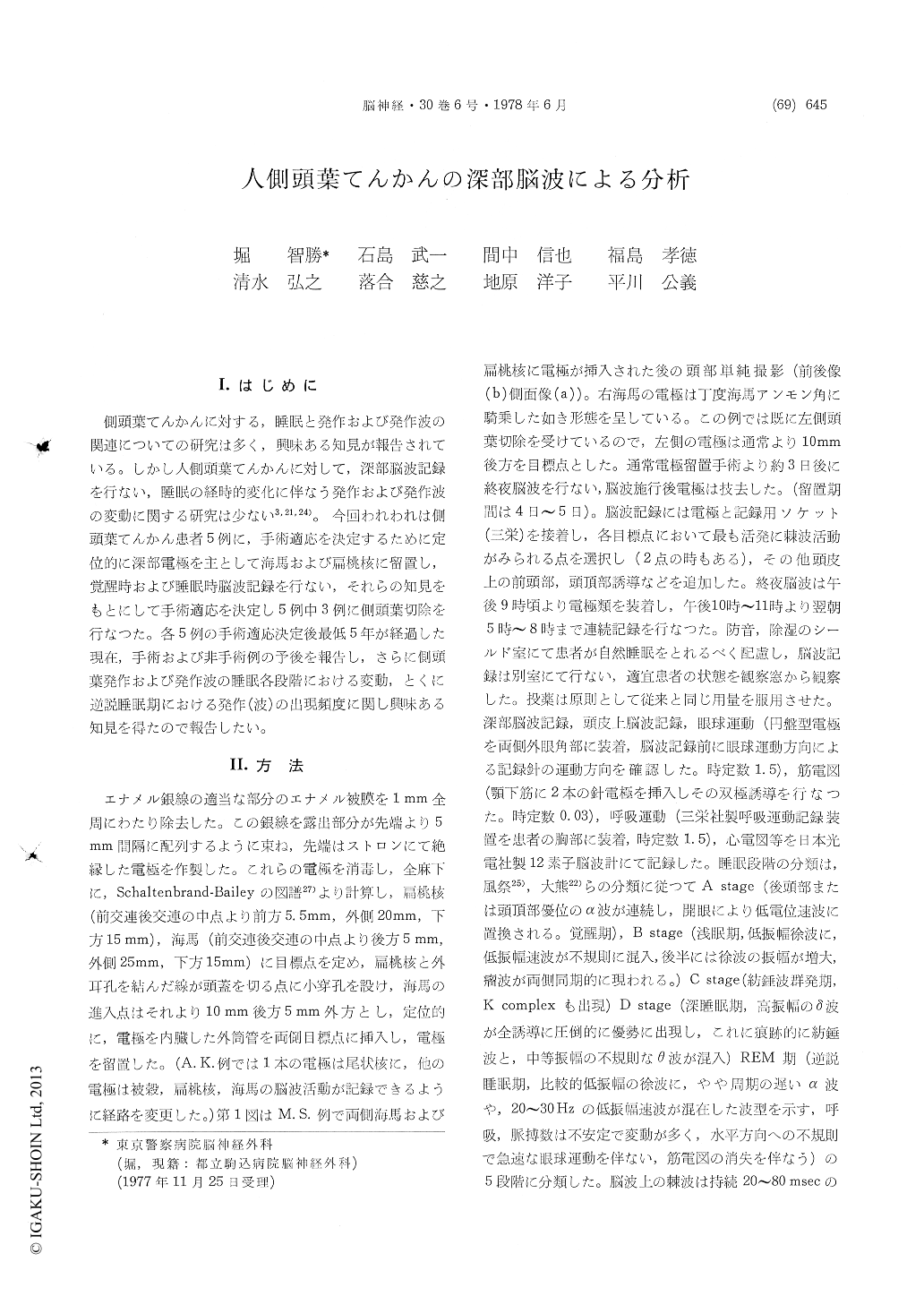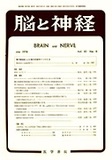Japanese
English
- 有料閲覧
- Abstract 文献概要
- 1ページ目 Look Inside
I.はじめに
側頭葉てんかんに対する,睡眠と発作および発作波の関連についての研究は多く,興味ある知見が報告されている。しかし人側頭葉てんかんに対して,深部脳波記録を行ない,睡眠の経時的変化に伴なう発作および発作波の変動に関する研究は少ない3,21,24)。今回われわれは側頭葉てんかん患者5例に,手術適応を決定するために定位的に深部電極を主として海馬および扁桃核に留置し,覚醒時および睡眠時脳波記録を行ない,それらの知見をもとにして手術適応を決定し5例中3例に側頭葉切除を行なつた。各5例の手術適応決定後最低5年が経過した現在,手術および非手術例の予後を報告し,さらに側頭葉発作および発作波の睡眠各段階における変動,とくに逆説睡眠期における発作(波)の出現頻度に関し興味ある知見を得たので報告したい。
Five epileptic patients whose epileptic foci had been considered in the temporal lobe were inves-tigated by the stereotactically implanted depth electrodes in the amygdalae and hippocampi in order to determine the indication of the temporal lobectomy. Three of five were operated, as their (main) epileptic foci were considered to be in the temporal lobe (When the spontaneous seizure begins at some region and the seizure is in duced by the electrical stimulation at the same region, the region is considered to be the epileptic focus of the patient.). Five years after the operation 2 cases were almost free of their seizures (case Z. F. completely cured without anticonvulsants;case M. K. two minor seizure-like episodes during the five years and treated now by anticonvulsants), and one case showed persistent epileptic episodes in spite of its decreasing tendency (this case had another epileptic focus in the parietal region at the time of the depth electrode investi gation). The other two cases who had not been operated showed persistent epileptic episodes in spite of the intensive antiepileptic therapy (one case was operated stereotactically at the level of the right internal medullary lamina to alleviate the attacks).
In these five cases, the all night depth recording were performed to obtain the natural spontaneous epileptic seizure and to analyze the variability of the epileptic spikes during the all night sleep.
Two cases whose epileptic foci were considered to be in the amygdala and hippocampus respectively showed the increasing spike discharges as sleep deepened, but during the REM period the incidence of the spike discharge decreased significantly as compared to those of the other period of the sleep stages, though its incidence was significantly higher than that of the awake period. This type of spike variation was considered to be pathognomonic to the temporal lobe epilepsy whose epileptic focus was in the limbic structures. All other three cases also showed the decrease of the epileptic spikes during the rem period. But case A. K. showed very interesting pattern, that is, the frontal spikes were significantly increased during the rem period and on the other hand, the hippocampal spikes decreased significantly during the same period as was seen in other cases. This may be the different organization of the epileptic nature between the temporal epilepsy and the frontal epilepsy.
Further study shoud be performed to clarify the epileptic nosology and it must be strengthened that the depth recording is essential to determine the operation when the temporal lobectomy is indicated for the intractable temporal lobe epilepsy.

Copyright © 1978, Igaku-Shoin Ltd. All rights reserved.


